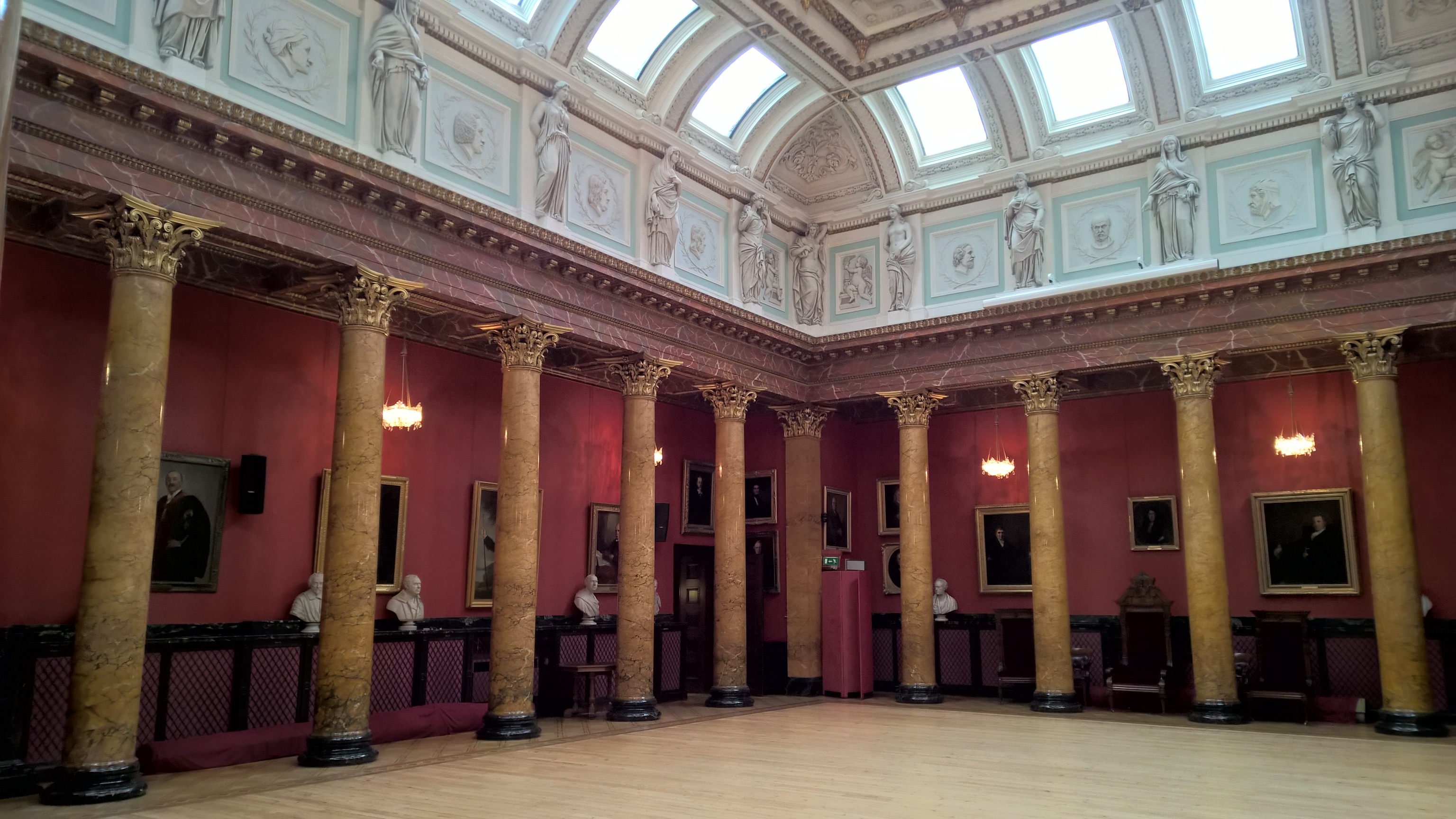|
Robert Hamilton (Scottish Physician)
Robert Hamilton (6 December 1721 – 9 November 1793) was a Scottish physician. Biography Hamilton of Lynn, was born at Edinburgh 6 December 1721, and educated at the high school. He was apprenticed to William Edmonston, surgeon-apothecary of Leith, and attended the medical lectures. In 1741 he entered the navy as surgeon's mate, and remained in the service until 1748, occasionally attending the lectures of William Hunter and of William Smellie in London. Having settled at King's Lynn, he acquired a good practice, and was consulted by patients from a distance. He was a fellow of the Royal College of Physicians at Edinburgh, and a member of several other learned societies. In 1773 he sent to the Royal Society of Edinburgh a paper on mumps (printed in vol. ii. of the 'Transactions,' 1790). Another paper, on a case of tapping the bladder per rectum, is printed in the 'Philosophical Transactions,' lxvi. (1776). His longest essay is 'Observations on Scrophulous Affections, with rem ... [...More Info...] [...Related Items...] OR: [Wikipedia] [Google] [Baidu] |
Edinburgh
Edinburgh is the capital city of Scotland and one of its 32 Council areas of Scotland, council areas. The city is located in southeast Scotland and is bounded to the north by the Firth of Forth and to the south by the Pentland Hills. Edinburgh had a population of in , making it the List of towns and cities in Scotland by population, second-most populous city in Scotland and the List of cities in the United Kingdom, seventh-most populous in the United Kingdom. The Functional urban area, wider metropolitan area had a population of 912,490 in the same year. Recognised as the capital of Scotland since at least the 15th century, Edinburgh is the seat of the Scottish Government, the Scottish Parliament, the Courts of Scotland, highest courts in Scotland, and the Palace of Holyroodhouse, the official residence of the Monarchy of the United Kingdom, British monarch in Scotland. It is also the annual venue of the General Assembly of the Church of Scotland. The city has long been a cent ... [...More Info...] [...Related Items...] OR: [Wikipedia] [Google] [Baidu] |
William Hunter (anatomist)
William Hunter (23 May 1718 – 30 March 1783) was a Scottish anatomist and physician. He was a leading teacher of anatomy, and the outstanding obstetrics, obstetrician of his day. His guidance and training of his equally famous brother, John Hunter (surgeon), John Hunter, was also of great importance. Early life and career Hunter was born at Long Calderwood, now a part of East Kilbride, South Lanarkshire, to Agnes Paul (–1751) and John Hunter (1662/3–1741). He was the elder brother of surgeon, John Hunter (surgeon), John Hunter. After studying divinity at the University of Glasgow, he went into medicine in 1737, studying under William Cullen. Arriving in London, Hunter became resident pupil to William Smellie (obstetrician), William Smellie (1741–44) and he was trained in anatomy at St George's Hospital, London, specialising in obstetrics. He followed the example of Smellie in giving a private course on dissecting, operative procedures and bandaging, from 1746. His court ... [...More Info...] [...Related Items...] OR: [Wikipedia] [Google] [Baidu] |
William Smellie (obstetrician)
William Smellie (5 February 1697 – 5 March 1763) was a Scottish people, Scottish Obstetrics, obstetrician and medical instructor who practiced and taught primarily in London. One of the first prominent Midwife#Men in midwifery, male midwives in Britain, he designed an improved version of the obstetrical forceps, established safer delivery practices, and through his teaching and writing helped make obstetrics more scientifically based. He is often called the "father of British midwifery". Early life and education Smellie was born on 5 February 1697 in the town of Lesmahagow, Scotland. He was the only child of Sara Kennedy (1657–1727) and Archibald Smellie (1663/4–1735), a merchant and burgess of the town. Smellie practiced medicine before getting a license, opening an apothecary in 1720 in Lanark. It was not a particularly lucrative venture, as he also sold cloth as a side business to supplement his income, but he began reading medical books and teaching himself obstetrics ... [...More Info...] [...Related Items...] OR: [Wikipedia] [Google] [Baidu] |
Royal College Of Physicians At Edinburgh
The Royal College of Physicians of Edinburgh (RCPE) is a medical royal college in Scotland. It is one of three organisations that set the specialty (medicine), specialty training standards for physicians in the United Kingdom. It was established by royal charter in 1681. The college has over 14,000 fellows and members worldwide, who are entitled to use using the post-nominal MRCP(Edin) or FRCP(Edin). History The RCPE was formed by a royal charter, granted in 1681, with Robert Sibbald, Sir Robert Sibbald recognised as playing a key part in the negotiations. Three applications preceded this and had been unsuccessful. There were 21 original Fellows, eleven of whom were graduates or students of the University of Leiden. The Universities (Scotland) Act 1858 resulted in several items from the college's charter becoming obsolete, and they obtained a further charter on 31 October 1861. In 1920 the college enacted changes that allowed women to be admitted on the same terms as men. The ... [...More Info...] [...Related Items...] OR: [Wikipedia] [Google] [Baidu] |



